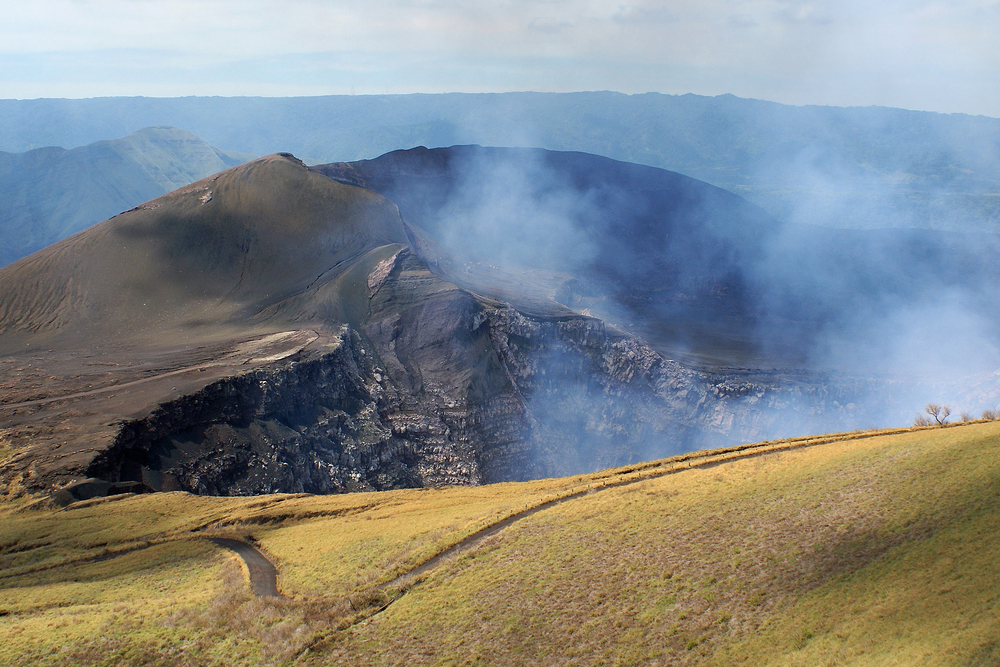Masaya Volcano Overview
Masaya Volcano National Park, known locally as Parque Nacional Volcán Masaya, is one of Nicaragua’s most captivating natural reserves. Located about 14 miles (23 km) south of the capital, Managua, this park spans approximately 21 square miles (54 square kilometers) and is home to one of the most active volcanoes in Central America.
The park features a dramatic volcanic landscape dominated by Masaya Volcano, an awe-inspiring crater that continuously emits sulfurous gases and, at times, even reveals a glowing lava lake. The terrain is a striking mix of dry tropical forest, rugged lava fields, and steep crater walls that showcase the park’s fiery geological history.
The Santiago Crater, the most active part of Masaya, presents an unforgettable sight with its frequent bursts of molten lava visible from designated viewpoints. Surrounding the volcano are several other extinct craters and formations shaped by past eruptions, making the park a dynamic display of Nicaragua’s volcanic past.
The vegetation within Masaya Volcano National Park is uniquely adapted to the harsh, mineral-rich soil left behind by lava flows. Despite the challenging conditions, the park supports a variety of plant species, including thorny shrubs, hardy trees, and vibrant wildflowers that have flourished in the volcanic terrain.
The contrast between green patches of resilient vegetation and the barren, dark lava rock creates a surreal landscape. Some areas of the park contain dry tropical forests, which host a diverse range of wildlife that has adapted to this extreme environment.
Visitors to the park may encounter an array of fascinating wildlife, including mammals such as white-faced capuchin monkeys, coyotes, deer, and armadillos. The park is also home to an impressive variety of birds, making it an excellent location for birdwatching.
Notable avian species include the Pacific parakeet, which nests within the volcanic rock formations, as well as hawks, falcons, and motmots. Perhaps one of the most unique creatures found within Masaya’s caves and crevices is the large population of bats, which can be observed emerging in great numbers at dusk.
One of the park’s most popular features is the opportunity to witness the glowing lava within Santiago Crater. Unlike many other volcanoes in the world, visitors can drive almost directly to the rim of the crater, where they can peer into the depths of the active volcano.
The park also offers a network of hiking trails that lead to scenic viewpoints, secondary craters, and lava tubes. A particularly well-known trail is the Sendero Los Coyotes, which offers panoramic views of the surrounding landscape and leads to a lookout point over the vast volcanic plains. Another highlight is the park’s underground lava tunnels, which were formed by previous eruptions and serve as an important refuge for the local bat population.
Masaya Volcano National Park faces ongoing conservation challenges, particularly due to its high level of volcanic activity and the increasing number of visitors. Protecting the delicate ecosystem around the volcano while maintaining accessibility for tourism remains a priority.
The park has implemented measures such as visitor limits in certain areas and educational programs to promote conservation awareness. Despite these challenges, the park stands as one of Nicaragua’s most remarkable natural attractions, providing visitors with a rare opportunity to experience the raw power of an active volcano up close while supporting efforts to preserve its unique environment.











































































